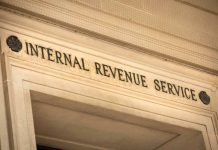
Introduction
According to CNBC, Americans typically spend around an average of $5,000 on out-of-pocket healthcare costs. These costs might be for the cost of care or an insurance premium. Many people do not have thousands of extra dollars to spend when it comes to covering the cost of medical debt. This is why medical expenses are one of the top causes of debt in America. This means it is more important than ever to understand your debt and how to overcome your debt problems.
You probably do not know where all that racked-up debt came from. One day, you were just a regular person trying to get by. The next day, you have large amounts of money that you need to pay as soon as possible. Not to mention that you do not have the money to pay for it. That is normally how it goes, and there is a way out. You just need to be patient and really strict with yourself for a while. (A long while.)
Your goal is to create an emergency fund that will be able to lessen the impact that unexpected debt can have on your financial situation. In order to figure out how you can do that, there are steps that you first must take.
1. Know Your Current Debt Situation
The best place for you to start is by understanding what you currently have going on. You will want to see what your current standing is in order to know what you should aim to achieve. It is also important to try to understand what causes debt in your situation. You can figure out your current debt by looking at your bills. For example, your credit card debt can be reported by your creditor whether it is Discover, Chase, Capital One, etc. You will want to know how much you owe, and what the current pace is to pay off the debt.
If you make a monthly payment of $100 then it will take you 24 months to pay off a debt of $2,400. The interest rates that you accumulate can make the grand total more. But, companies, regardless of the type of debt, typically provide a clear understanding of what you owe.
Once you understand your financial situation, how much you owe and to whom, then you will be able to start planning. You can create a financial plan on how you pay them back and what pace you can pay them back with, without falling deeper into financial trouble. It will not be easy, but it will be worth it. (Besides, nothing worthy ever comes easy, or something like that.)
2. Review Available Options for Your Debt
Now that you understand what you are dealing with, there are some courses of action that you can take that will be more beneficial than others. A popular debt relief option is debt consolidation. You might have multiple lines of debt whether that is from medical bills, credit debt, student loans, etc. In that case, then you can consolidate all of those debts by getting a personal loan.
When you get a personal loan to consolidate your debt, you are paying off all individuals lines of debt so that you can essentially bring them together into one account. Not only can this potentially reduce your interest rate, but you will also be able to better manage your financial situation. You also may be able to reduce the amount of interest on your personal loan when you refinance every 6 months to a year!
A personal loan sounds scary, but multiple lines of debt are even scarier. With a personal loan, you can keep track of the money that goes out and where it goes. Instead of creating a spreadsheet every month, you can just monitor everything with a personal loan. One loan is better than three, after. (In this case, the more is not the merrier.)
3. Make Some Extra Cash On The Side
Now, you have a clear understanding about your goals and you have looked into alternatives to managing your debt. The next step is for you to take more control of your finances. You can look into ways of making some extra income. This can be from picking up another source like becoming a driver for Lyft, a virtual assistant, or even considering getting another job all together. Additional income can allow you to pay off your debts more quickly and build your resume at the same time!
By working another job, you will be able to increase your income level and pay off your debt faster and with bigger amounts. It might be a little tiring and you might have to stretch yourself out for a while. But, you will not have to worry about finances for much longer. Also, another job will help you to save money that you can keep after you are done paying off your debt. You do not have to work another job for your rest of your life, only until you have paid off your debt. It is a temporary situation for permanent relief, so it helps more than it hurts. (Actually, it does not hurt at all.)
4. Don’t Think About It Too Much, But Still Think About It
We do not mean stop thinking about your financial situation all together. Instead, have one less area of your life stressing you out. You can automate your savings to automatically put amounts of money aside without even realizing that you are building your savings. There are plenty of available applications that you can use, but some good free options are Acorns, Chime, Digit, etc. Instead of manually paying off your debt and watching the money disappear, you can have applications do that for you.
This could be really helpful, especially if you are a scatterbrain. Try as you might, you cannot keep things in order. That is okay! There are applications that will automatically transfer amounts of money towards your debt, paying it off without your knowledge. Of course, you will see the money disappear, but you do not have to be the one who does it. Just make sure that you are subscribed to a credible and certified application. There are online scams that pretend to be a transfer application, but end up taking the money for themselves. Also, consider an application that is free. That way you will not have to pay money for an application to take your money away.
5. The Debt Snowball Method Could Work Wonders For You!
With the debt snowball method, it will help you to improve your debt, one small debt at a time. You might be paying the minimum payment for your debt, which sounds reasonable. But, the debt snowball method works a bit differently. This method will ask you to make the minimum payment on all your debts, but the smallest debt you have will be paid differently. With the smallest debt, you should pay as much as you can towards the debt. Once you start the debt snowball method, you will be able to eliminate your smallest debts easily and pay for the minimum payments on the rest of your debt.
The debt snowball method will encourage you to put most of your efforts on one debt at a time, instead of juggling multiple debts. It will help you gain momentum on paying your off debt and keep you on track. There are only two conditions that you should not apply the debt snowball method. This is when you have a payday loan or a title loan. These loans normally have higher interest rates, so you should pay them off right away.
6. Pay More Than The Bare Minimum Even If You Don’t Want To
You are probably paying the minimum payments for your debts, which is okay. It is a better alternative to not paying at all. But, there are better options that will help you get out of debt faster. You can pay off your debt with amounts more than the bare minimum required. This will help you pay off your debts faster and improve your credit score at a faster pace. When you pay more the minimum payment required, you will also save yourself from paying interest throughout the duration of your loan. Interest rates are a nightmare on their own, so you should do your best to avoid it.
It would be hard for you to do that, especially if you have multiple debts. But, this is a temporary situation for permanent financial relief. Just think of how relieved you will be when you are done with paying off all of your loans.
7. Start a Bone-Dry Budget From Now On
If you are really serious about paying off your debt as fast as you can, you will need to make some sacrifices. You will need to cut down your expenses as much as possible and you can do that with the bare-bones budget. The bare-bones budget means that you cut your expenses as low as possible and you should live that way for as long as you can. That means that you need to cut out anything luxurious in your lifestyle to avoid unnecessary spending. With a bare-bones budget, you will be able to pay more money towards your debt. On the plus side, your bare-bones, bone-dry budget is only a temporary fix. Once you are finally out of debt, or at least much closer to reaching your goal, you can start by slowly adding luxurious spending to your budget.
Do not worry; you will not live like that forever. It is not always going to be like this and you can go back to your original lifestyle soon. You just need to show some financial self-control for a while and then you can go back to normal, spending money on eating out and shopping on Amazon.
8. Funnel Any Extra Cash Towards Your Debt
Sometimes, you might find yourself with extra cash. This could be from a tax refund or from a stimulus check, which is awesome for you. Instead of adding it to your savings or splurging on something you are craving, you should add it to paying off your debt. It sounds brutal, we’re sure. But the truth is, it is the right thing to do. (And the right thing to do and what you want to do almost never align, unfortunately.)
The Bottom Line Is,
Being in debt is a bad situation for anyone; it is a consensus that everyone is struggling when they are in debt. But, you do not have to stay in this bad situation forever. There are ways for you to get out of debt, without having to rob a bank and leave the country. You can follow these eight tips to help you avoid staying in debt. Make sure you know where your debt is coming from and how it got there. Also, you should consider cutting down on anything luxurious and keeping a bare-bone budget. Eventually, once you are out of debt and you can finally breathe again, you can start adding luxury to your lifestyle again.
You cannot know what unexpected costs you may come across in life. However, you can properly prepare your finances. When you do and you come across these unexpected costs, you will be able to better manage and lessen the impact. Take your time, and you may surprise yourself when taking control of your financial situation. Just remember that this tough situation will not last forever and you will get out of it. You just need to push through and keep going until you are out of the doghouse. Think of how relieved you will feel when it is all over. You never know, maybe you could even learn how to never be in debt again!
So, start finding out more about your debt situation and take control of your financial situation.
















